Maia Ruth Lee on
Art reflecting Identity, Roots, Community,
on Migration, Memories and Language as Symbols
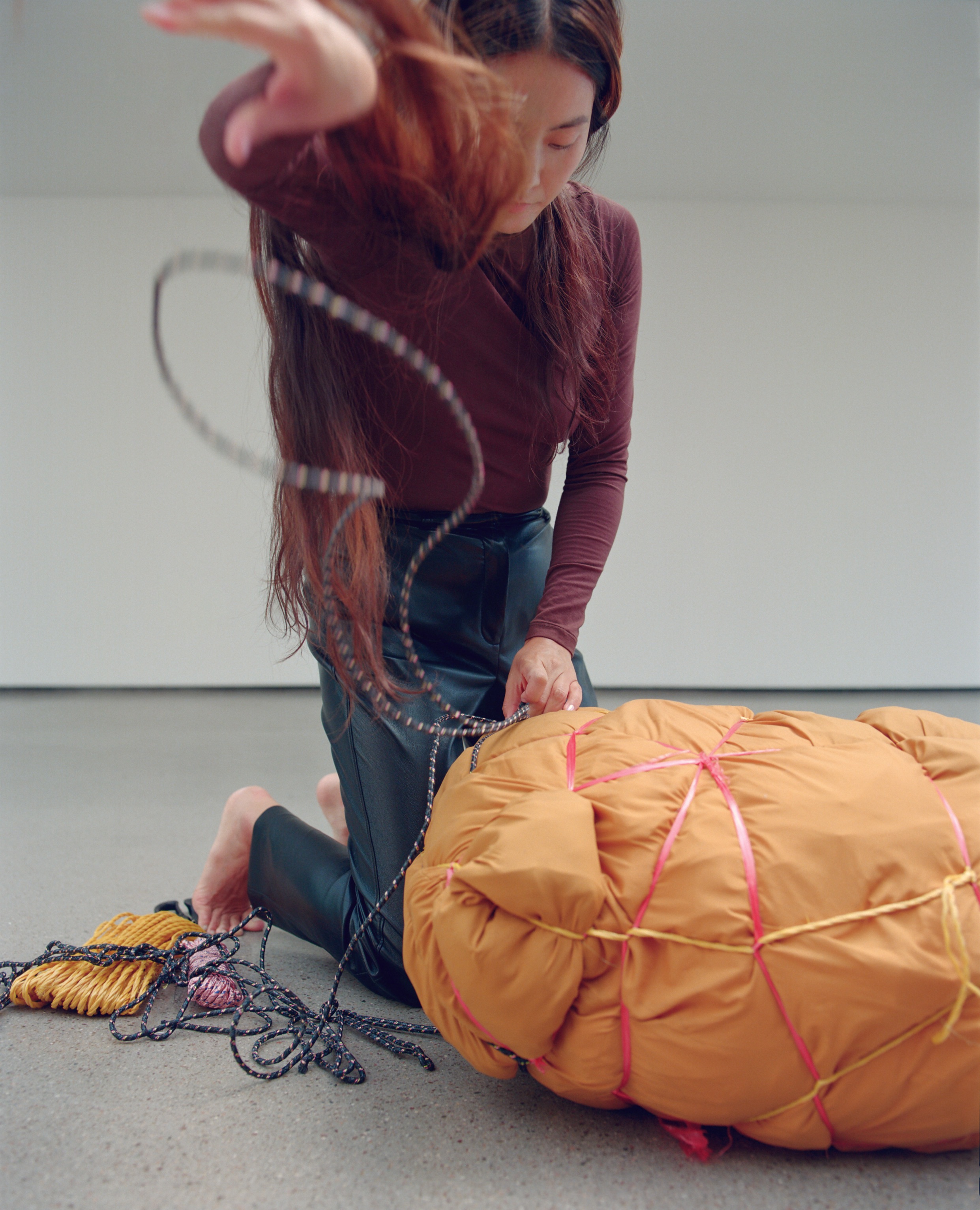
Maia Ruth Lee by Dario Catellani
Maia Ruth Lee’s art carries important notions, summoning thoughts on borders, migration, labour, security, protection, identity, communication, memories, community and roots.
With understanding and empathy, Lee documented and photographed for about six years, the luggages of migrant workers at Kathmandu airport in Nepal.
A lived experience of migration, being Born in Busan, South Korea, growing up between Kathmandu and Seoul, then living in New York City, and currently residing in Salida, Colorado, the artist was drawn towards the object of the baggage, for its ability to hold, echo and share across the invisible and visible stories it carries.
Her ongoing series ‘Bondage Baggage’ recreates the luggages wrapped in rope Lee observed at Kathmandu airport, depicted in both sculptures and paintings, they consider and bring forth those very notions of identity, security, protection, migration, roots and community.
In other works, Maia Ruth Lee explores language’s condition for storytelling, both its success and failure in communication. Moving to create a language through symbols with her steel glyphs, assigning each with a meaning, showcasing their forms and patterns in movement, the artist engages with the viewer in a new intuitive language brought to life through her art, evoking the glyphs into narratives, into symbols of emotions, and into a connective tool of signs.
Maia Ruth Lee’s artworks reflect both her observations and experiences, taking us alongside her on a voyage of both discovery and nostalgia, of beautiful references and memories, of openness, of movement across borders, across thoughts and emotions, of family, roots, community, protection and preservation. An art that entangles and untangles notions and stories, an art that is engaging and compelling, with a feel of peace, spirituality and healing emitting from the artist’s work, shaping through art, a world of connection and empathy.
When did you first become interested in art and what drew you towards creativity?
One of the first art objects I was drawn to were Thangka paintings. They existed in my everyday growing up in Nepal and I remember being excited by the representation of the deities, but also the profound details and complex foundation of compositions on which they were depicted. Art as a meditative tool is fascinating to me, as well as the storytelling aspect of each painting.
You were born in South Korea, grew up in Nepal, lived in New York and currently settled in Colorado, can you share with us a bit about your journey, travels and the creative references that have come into your work?
The journey became a big part of my work, after having moved around my whole life, my work started reflecting my lived experience and the concepts of rootlessness and the migrant identity.
How did your series ‘Bondage Baggage’ develop? Can you tell us about the ideas that lie behind this body of work, and the different notions you want to speak of through your art?
Bondage Baggage was a series that I started to investigate back in 2013. I was revisiting my parents in Nepal and was drawn to the luggage at the airport when I arrived. From then I started documenting the luggage every time I was in Nepal, and collected hundreds of images of luggage that were wrapped and packaged in a certain manner that felt universal. For me the objects sparked ideas around family, labor, travel, protection, privacy and migratory bodies. I started creating my own Bondage Baggage sculptures using similar household materials, and they are still evolving today.
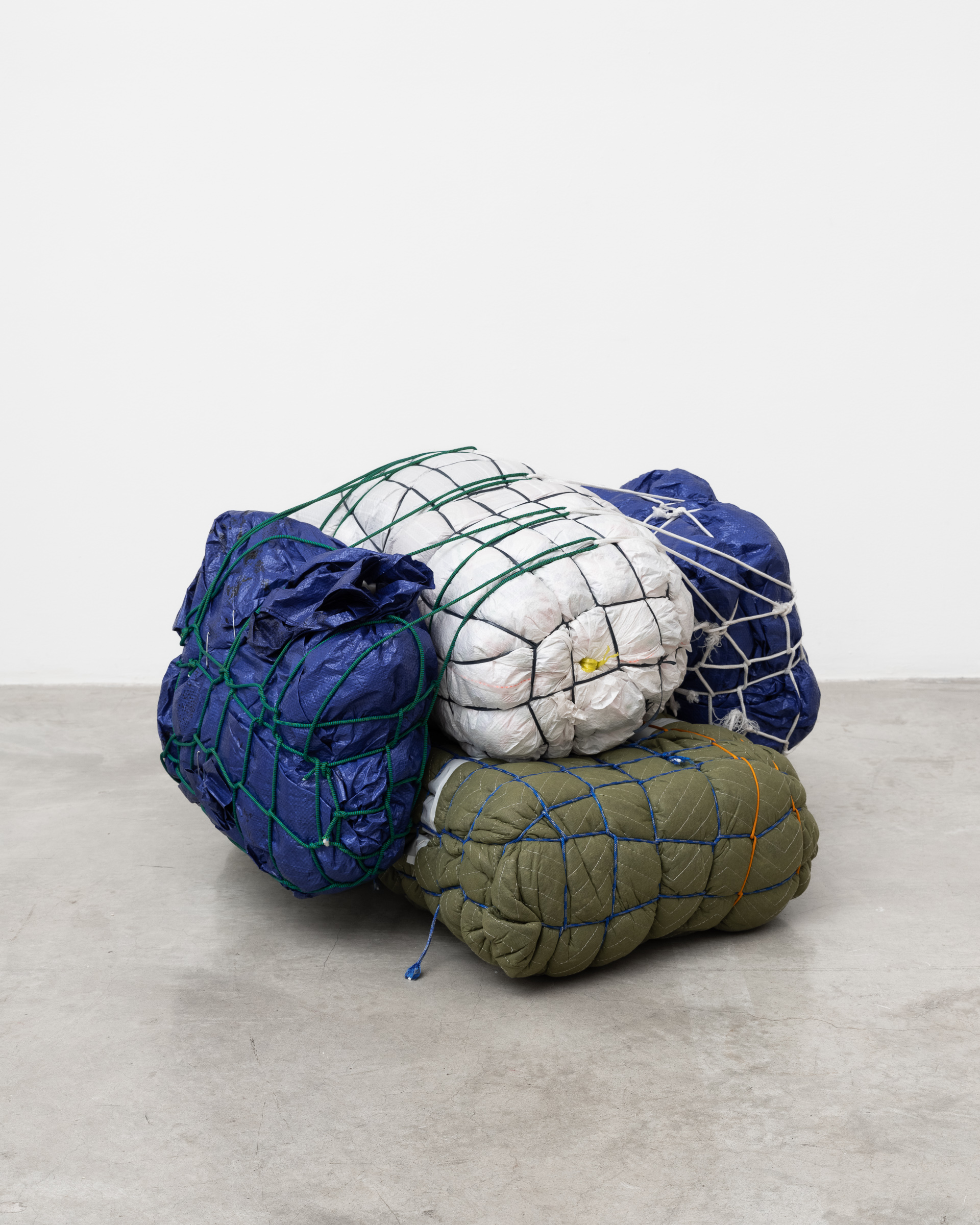
Bondage Baggage sculpture.
Installation image of Maia Ruth Lee's exhibition 'The skin of the earth is seamless' at Tina Kim Gallery, New York (April 6–May 6, 2023).
Image courtesy of the artist and Tina Kim Gallery.
You have mentioned that people’s luggage are packed tightly with a rope as a way to secure them. How much does your project ‘Bondage Baggage’ relate to protecting or securing your memories, your roots?
I think the materiality of the sculpture and how it is made and the result of the shape and form enter into a poetic space. It becomes translatable into many different metaphors and ideas, one of which is about security and self preservation.
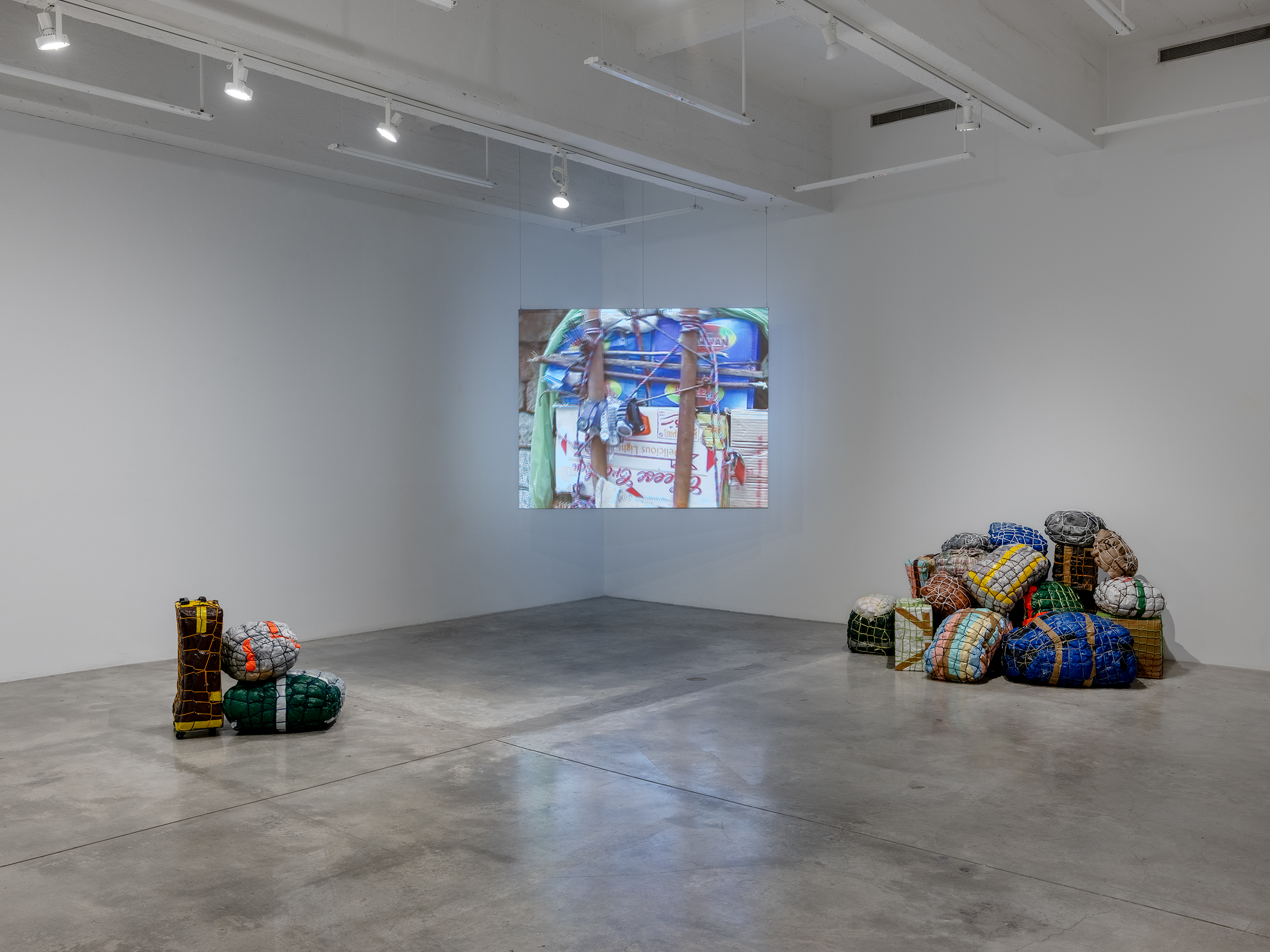
Installation image of Maia Ruth Lee's exhibition 'The skin of the earth is seamless' at Tina Kim Gallery, New York (April 6–May 6, 2023).
Image courtesy of the artist and Tina Kim Gallery.
The sculptures from ‘Bondage Baggage’ evolved into ink paintings—‘Bondage Baggage Atlas’,
The paintings, the inks, radiate outwards, going beyond the frame, beyond a border. What do the paintings evoke and what emotions did you sense throughout this process?
There is a sense of catharsis in painting and unraveling the Bondage Baggage paintings. They are the most outer layer of the sculpture, the skin if you will, and they are exposed to the ink that is rubbed and painted on, leaving the marks of negative spaces of the folds and the ropes that once held the sculpture together.
.jpg)
Bondage Baggage Painting
Installation image of Maia Ruth Lee's exhibition 'The skin of the earth is seamless' at Tina Kim Gallery, New York (April 6–May 6, 2023).
Image courtesy of the artist and Tina Kim Gallery.
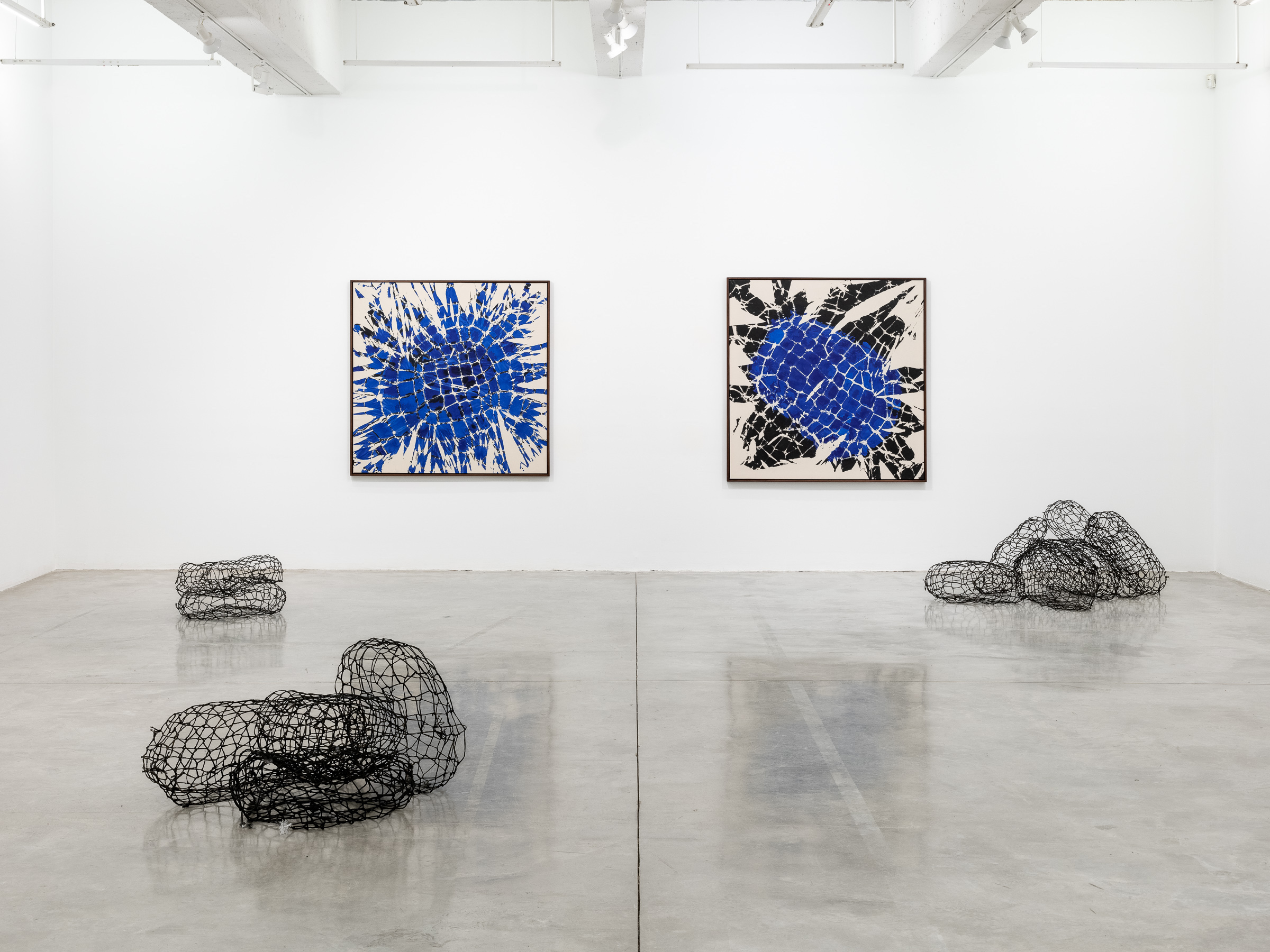
Installation image of Maia Ruth Lee's exhibition 'The skin of the earth is seamless' at Tina Kim Gallery, New York (April 6–May 6, 2023).
Image courtesy of the artist and Tina Kim Gallery.
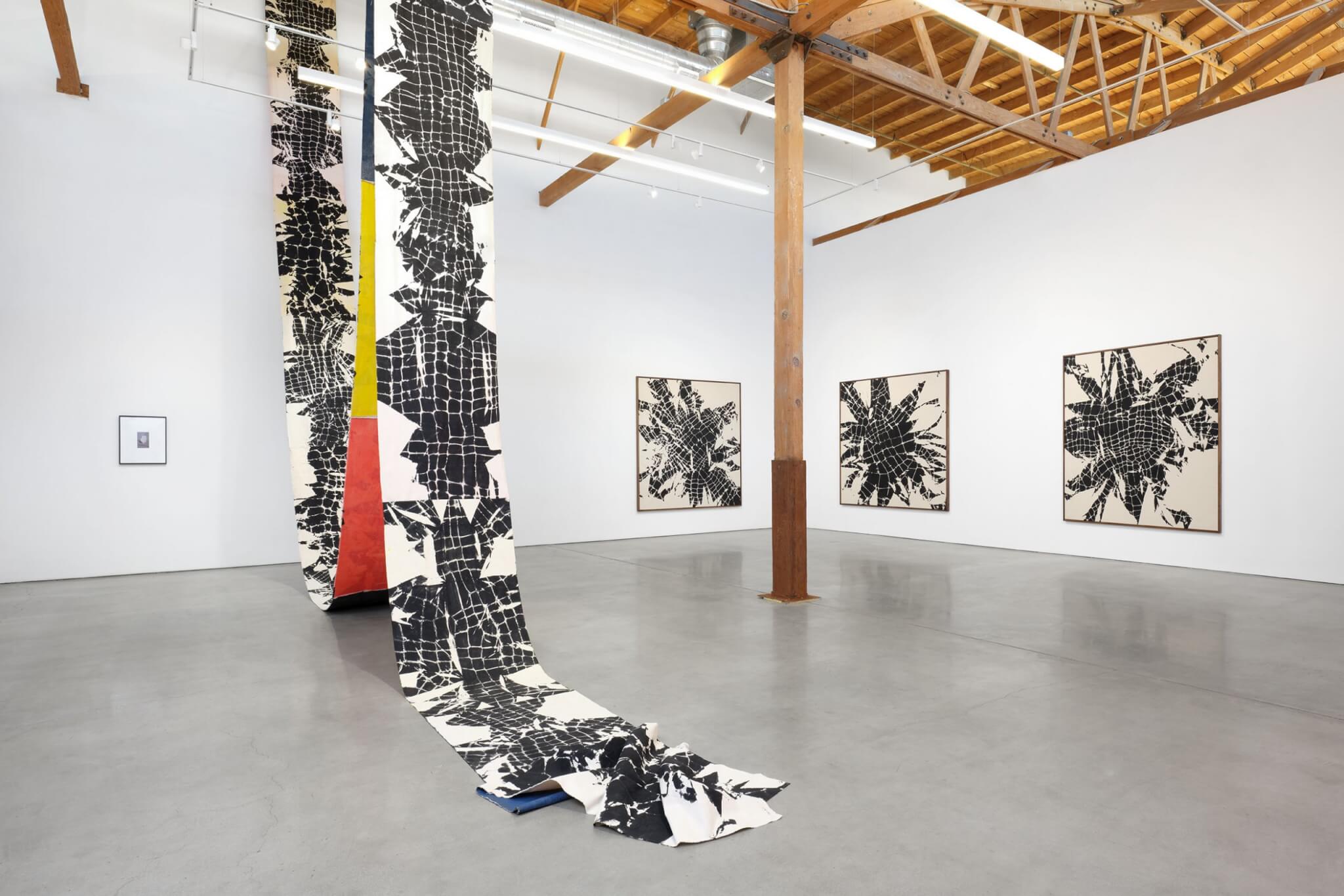
Installation view of Maia Ruth Lee's Migrant Reader exhibition, 2022, François Ghebaly, Los Angeles.
Courtesy of the artist and François Ghebaly Gallery
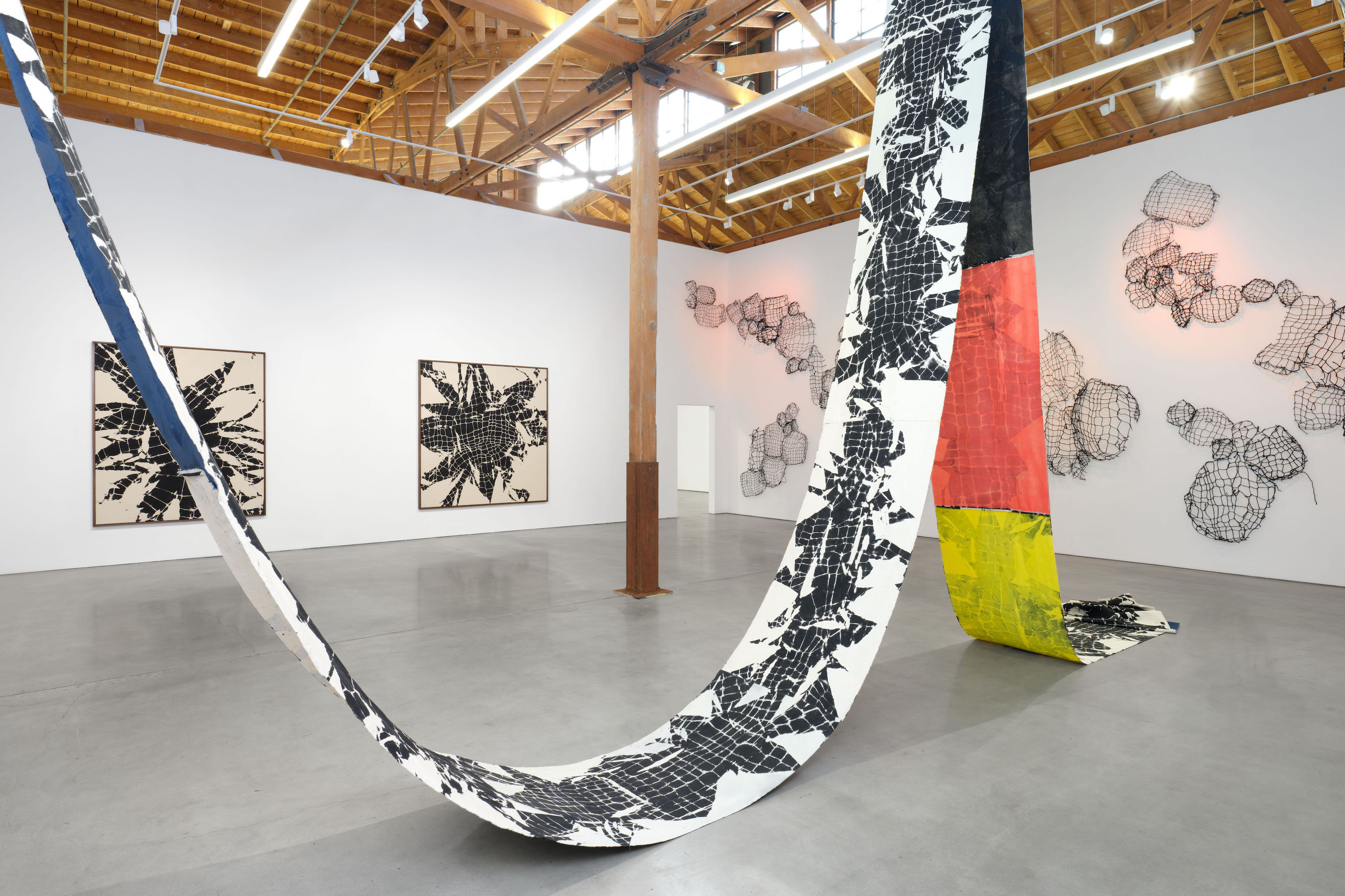
Installation view of Maia Ruth Lee's Migrant Reader exhibition, 2022, François Ghebaly, Los Angeles.
Courtesy of the artist and François Ghebaly Gallery
You also use language in your work, what led you towards seeing and applying language in your creativity?
Language has been a big part of my life, as my parents are linguists, I grew up understanding that language is at the core of one’s identity. That emphasis on language left a big impact on how I see and experience the world, and it eventually seeped back into my work as an adult.
What do the Glyphs represent? How do you decide on which shapes and forms?
Can you tell us about The Labyrinth Glyph Chart?
The Labyrinth is made up of 100+ steel glyphs that are salvaged metal scraps welded together from different Burroughs of NY. They were once used as parts of windows and fences as structural components of buildings - a symbolic element of protection and also of borders - that can segregate and separate us as humans. I reimagined them into a new lexicon and assigned new meanings to each of them.

Language of Grief 01-09 by Maia Ruth Lee, India ink on raw canvas, exhibition Language of Grief, MCA Denver Feb 26 - Aug 22, 2021
Courtesy of the artist and MCA Denver
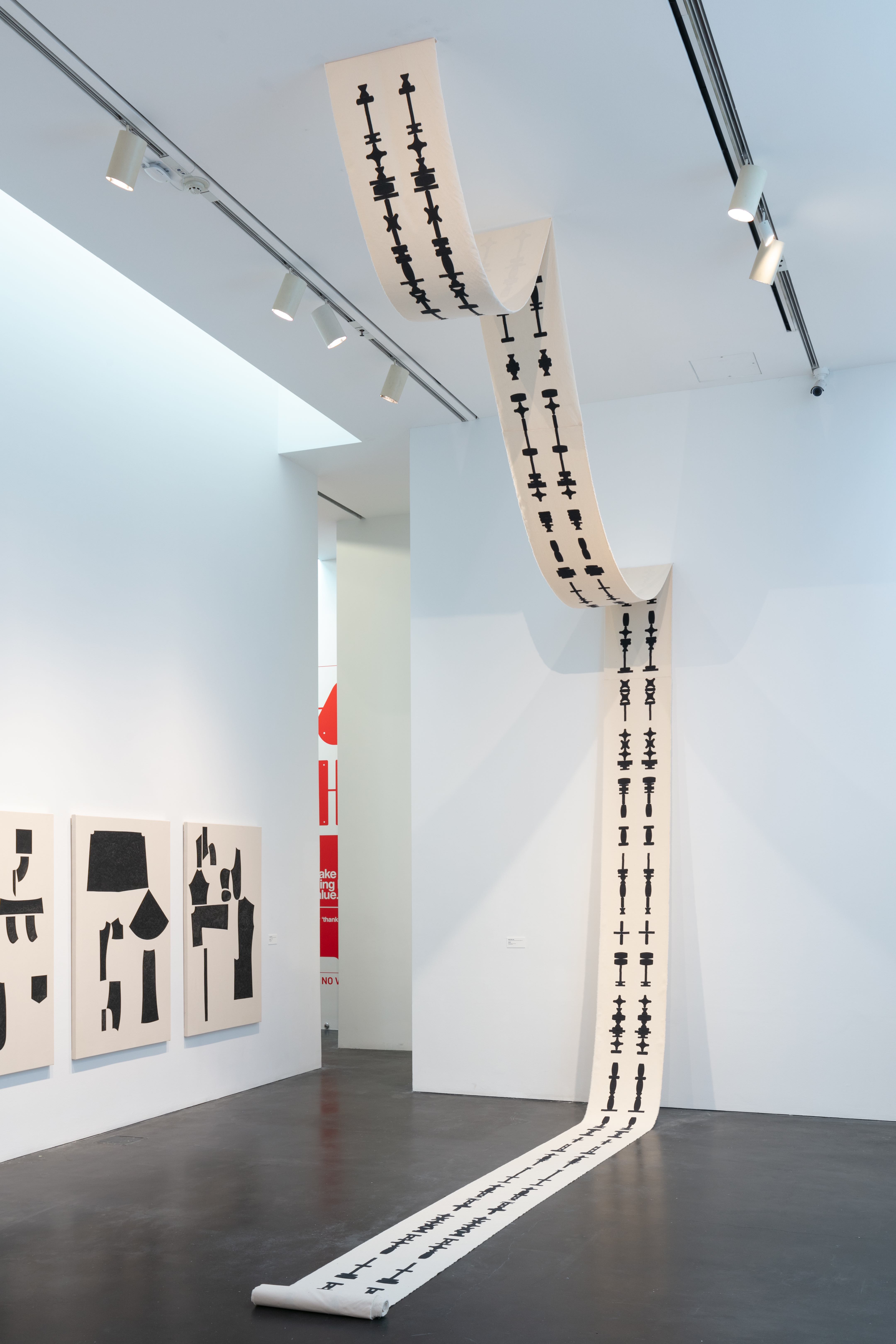
DICTATION by Maia Ruth Lee, Fabric Bandages on canvas, exhibition Language of Grief at MCA Denver Feb 26 - Aug 22, 2021
Courtesy of the artist and MCA Denver
For your film work, you completed your father’s documentation of Nepal, adding subtitles which are from your own letters you had written to your friends. How did you experience connecting both of your journeys, and the feel of different timelines merging?
It was interesting to work with my father’s footage, it really felt as though I was traveling into the past, and through my father’s POV I could see the world that we both lived. Now as an adult I understand his world better than when I did as a child who is present in the videos. The two timelines act as one, as I am re-living some of his experiences in my life, and in that unique space a lot can be shared with more understanding of one another. Generational mirroring can happen, whether that is intentional or not.
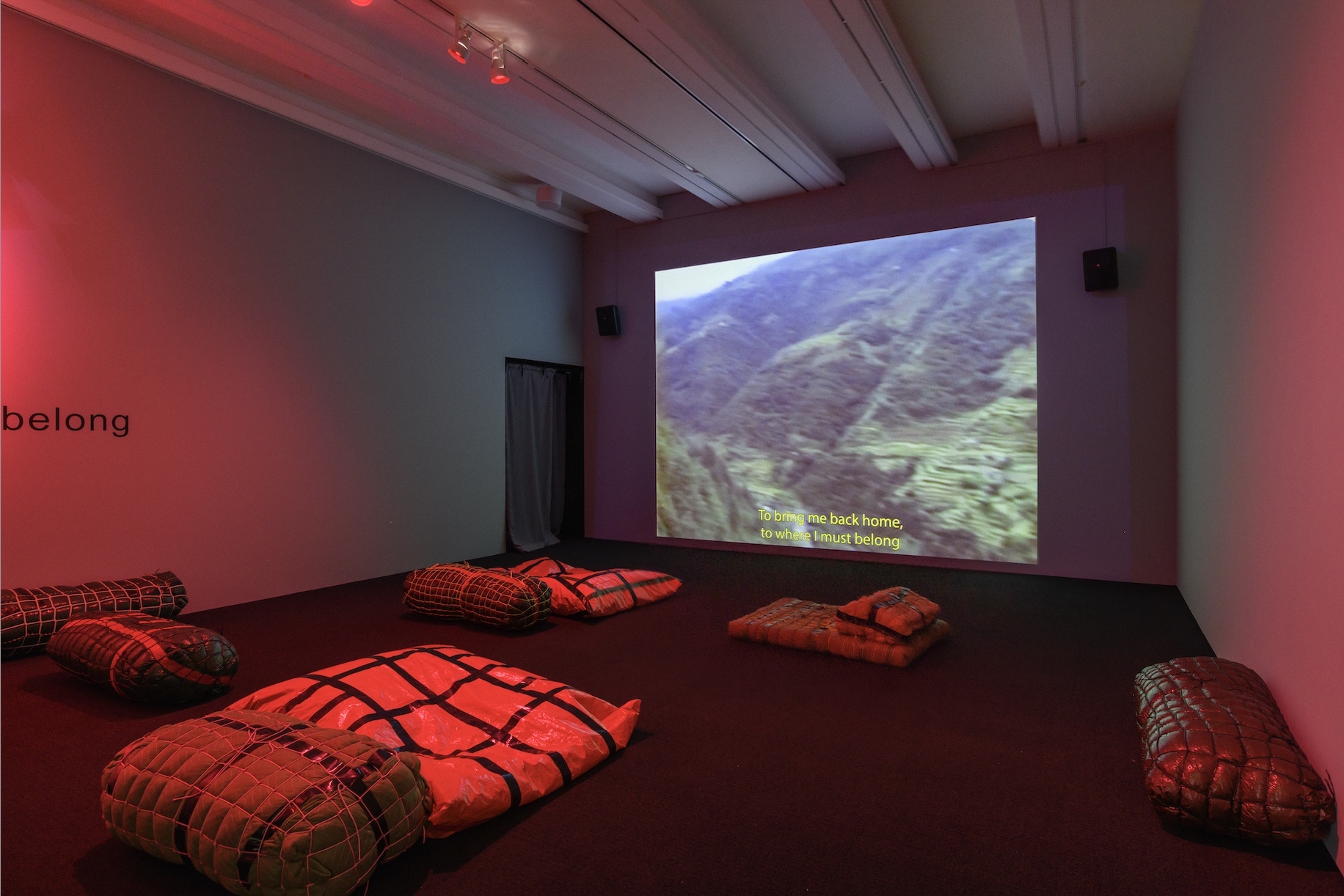
The Stranger by Maia Ruth Lee, Video, color, sound, 23:45 min,
Bondage Baggage Check-in, tarp, tape, rope, modular furniture, variable sizes, 2022
고향, 2022, size variable, decal, rope, India ink, red gel spotlight
exhibition Mountain/Time curated by Chrissie Iles, Anisa Jackson and Simone Krug, Aspen Art Musuem, May 25 - Sept 11 2022
Courtesy of the artist and Aspen Art Musuem
Maia Ruth Lee has held solo exhibitions at the Museum of Contemporary Art Denver (CO), Tina Kim Gallery (NY), and François Ghebaly Gallery (LA). Lee has participated in numerous group exhibitions including the Aspen Art Museum (CO), 2019 Whitney Biennial, Whitney Museum of American Art, Helena Anrather Gallery, CANADA gallery, Studio Museum 127, Salon 94 in New York, and Overduin & Co. Gallery, and Roberts & Tilton Gallery in Los Angeles. Lee attended Hongik University in Seoul, and the Emily Carr Institute of Art and Design in Vancouver, Canada. Lee was the recipient of the Gold Art Prize in 2021 and the Rema Hort Mann grant in 2017. Her work is held in the public collections at the Whitney Museum of American Art.
" Born in Busan, South Korea, then growing up between Kathmandu and Seoul, Lee spent over a decade in New York City, recently relocating to Salida, Colorado. Her lived experience of migrating as well as an awareness and empathy for the life of migrants in Kathmandu serve as continual source of inspiration and investigation for Lee. Therefore, her multidisciplinary practice spanning photography, video, painting, and sculpture move through questions around the self as a diasporic subject that expands and challenges our notion of borders and communities. Her baggage and textile works are metaphors and stand in’s of the body, their accumulations and narratives.
Language as a mechanism in its ability and failure to shape and give account to experiences, memories, and emotions has been a major thread in Lee’s work, as for those whose lives are precarious and unrooted— maps, atlases, and banners become a device that calls to mind their life of movement, and often, loss. Lee’s use of india ink, with its reference to calligraphy, point to human compulsion for storytelling, mark making, and archiving. Rather than lingering in futility and loss, Lee’s work opens up a passage way, forging new lexicons that give form to lives of transience, their stories, beyond immediate and accepted forms of legibility and comprehension. " https://www.maiaruthlee.club
Pictures courtesy and copyright of Maia Ruth Lee
